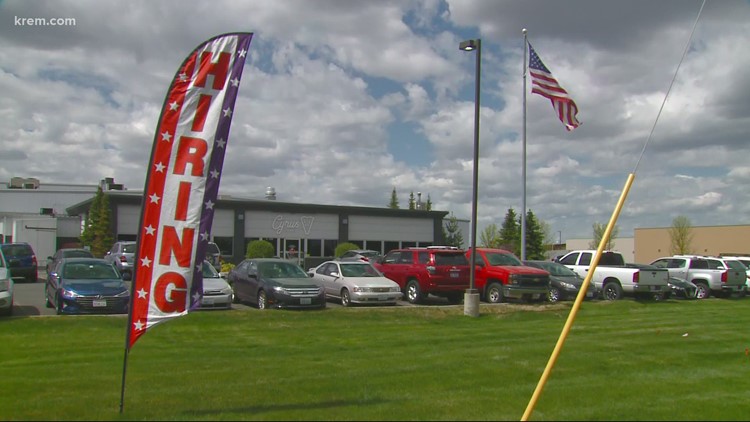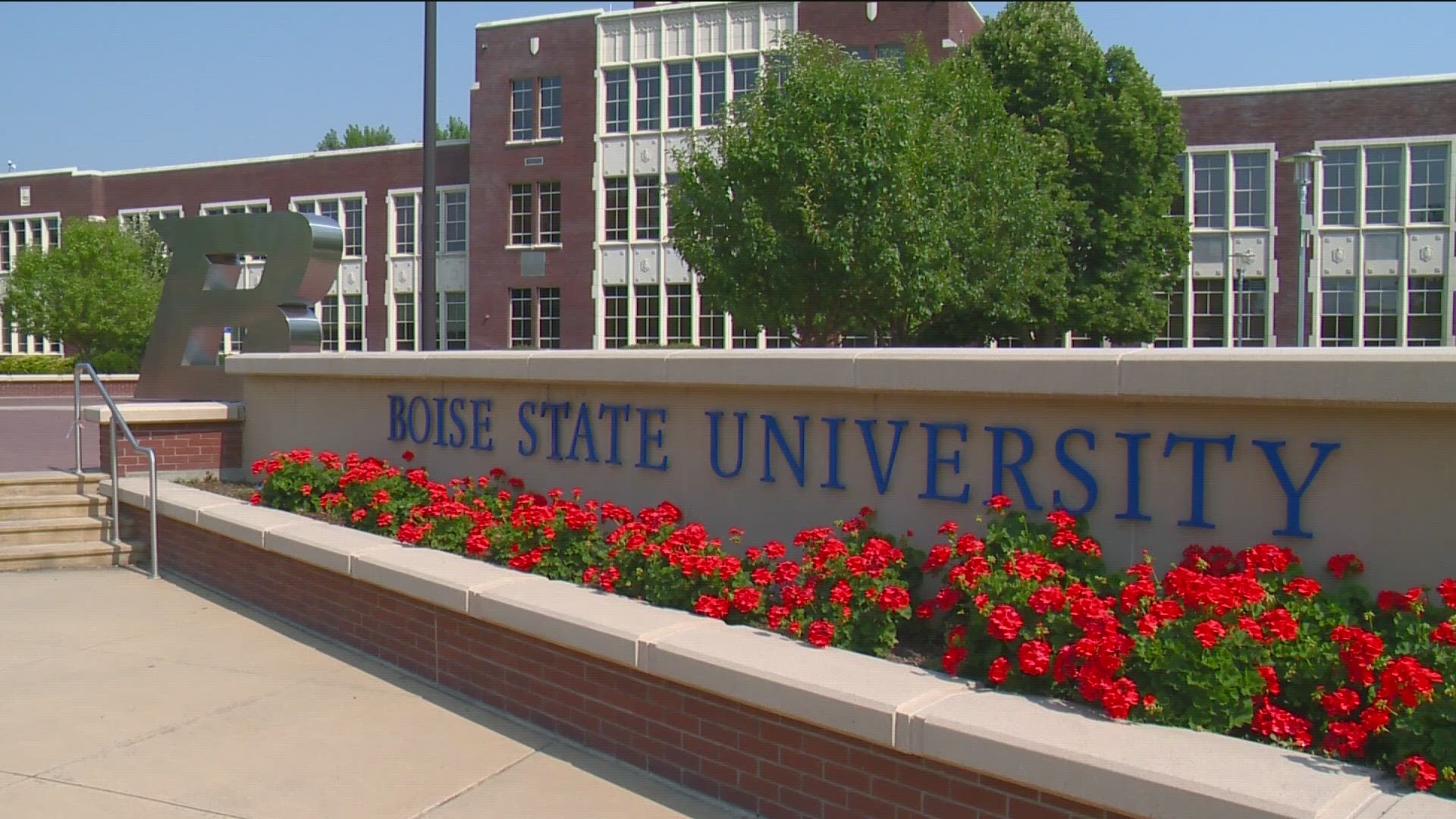COEUR D'ALENE, Idaho — Editor’s note: Regional economist Kathryn Tacke passed away unexpectedly on July 2. This is the last article she submitted for publication. Her previous articles can be found at Idaho@Work blog. The Press had an outstanding working relationship with Kathryn and passes along condolences to her friends and family.
What a difference a year makes. In April 2020, the pandemic and its effects pushed Idaho’s unemployment rate to an all-time high of 11.6%. This April, media across Idaho reported on labor shortages and how some businesses are struggling to stay open because they can’t find enough workers, according to KREM 2 news partner the Coeur d'Alene/Post Falls Press.
The labor shortages are widespread — not only showing up in the state’s fast-growing urban areas, but also in rural communities. The businesses finding it hardest to recruit workers are construction firms, home care agencies, employers of certified nurse aides, restaurants, motels, trucking and package delivery companies and some manufacturers. School districts throughout the state are finding it difficult to hire substitute teachers and paraprofessionals.
Why has the job market become so tight? Before the pandemic, labor shortages were common. Now, thousands of Idaho employers are trying to make their normal seasonal hires and add new jobs as the state continues its recovery and growth in manufacturing and construction industries accelerates. This article explains the complex reasons for all the "help wanted" signs in Idaho and why employers are getting little or no response to want ads.
Strong job growth, low unemployment
Idaho’s good fortune is one reason for the labor shortages. Its economy has proven hardy during the pandemic. Idaho’s seasonally adjusted unemployment rate in April was 3.1% - just five-tenths of a percentage point higher than its all-time low of 2.6% in February 2020. Only five states had lower rates in April. Idaho’s April rate was less than half of its historic average of 5.4% from 1978 through 2019.
Idaho employers added jobs faster than any other state in the past 12 months. Idaho and Utah were the only two states whose nonfarm payroll employment rose between March 2020 and March 2021.
Since the early 1970s, Idaho’s job markets have been primarily employers’ labor markets, where relatively high unemployment gave employers more of an advantage. Around 2005, most of them transformed to job seekers’ markets, as employers found it difficult to recruit workers and workers felt more comfortable quitting jobs to take other jobs. The severe recession that began in December 2007 flipped the job market back to an employers’ market for a few years. But as Idaho’s economy has grown at an exceptional pace since 2012, the advantage has returned to job seekers.
Construction stands out for its job creation. Idaho’s construction employment rose 7% between March 2020 and March 2021, faster than any other state. Construction employment fell in 34 states during that period. Idaho construction jobs for March reached a record high.
COVID-19-caused reductions in labor availability
While jobs have grown since the pandemic’s start, some Idahoans left the labor force.
COVID-19 caused some Idahoans to temporarily drop out of the labor force. Based on responses to the Household Pulse Survey conducted in late March 2021, the Census Bureau estimates 3,992 Idahoans did not work during the two-week period because they were sick with coronavirus symptoms and another 6,845 did not work because they were caring for someone with COVID-19 symptoms. Another 6,529 did not work because they were concerned about getting or spreading the coronavirus.
Many older workers dropped out of the labor force during the last year. The Current Population Survey, the source of U.S. labor force statistics, found the number of Idahoans 55 years and older in the state's labor force fell 11% from 257,100 in March 2020 to 227,400 in March 2021. Some of the drop occurred as seniors temporarily withdrew from the labor force because of fear of Covid-19 exposure. Much of the drop was more permanent as some people retired early. The Census Bureau's Household Pulse Survey conducted March 17 through March 29 found 16,590 Idahoans decided to apply earlier than expected for Social Security benefits because of the COVID-19 pandemic.
Some workers dropped out of the Idaho labor force during the last year because of child or elder care issues. Microdata from the March 2021 Current Population Survey found that 5,169 Idahoans were not looking for work because of family responsibilities, compared with 2,087 in March 2020. Many of these individuals are staying home because of a lack of childcare or elder care.
COVID-19 restrictions increased the costs of operating childcare centers, which already operated on thin profit margins, causing many childcare providers to go out of business. Lori Fascilla, executive director for Boise-based Giraffe Laugh Early Learning Centers, told the Idaho Statesman in early May more than 200 Idaho child-care providers closed last year.
Many of those that remain open are finding it difficult to hire enough qualified staff to operate at full capacity. As a result, finding childcare has become increasingly difficult. The pandemic also reduced the number of people willing to provide care for the elderly in their homes, resulting in some family members becoming full-time caretakers.
Long-term demographic challenges
There are more people reaching retirement age than there are youth to replace them. Despite Idaho's rapid population growth and relatively youthful demographics, the number of teens entering the labor force has grown much more slowly than the number of people entering their retirement years. While the number of 16-year-olds grew 18%, (+3,970), between 2000 and 2019, the number of 65-year-olds grew 146% (+12,930), according to Census Bureau statistics. Half of Idaho's counties saw their population of people between 15 to 24 years of age drop between 2000 and 2019.
Idaho employers will also be spending more time addressing retirements than they did 20 years ago. In 1992, 10% of their employees were 55 years of age and older, compared with 22% for 2020.
Contributing to the challenges posed by demographics is a decrease in youth’s willingness to participate in the labor force. The 2000 Census found 55.7% of Idaho’s 16-to-19 age group participated in the labor force. By 2019, according to the Census’s American Community Survey, their participation rate dropped to 46.9%.
Other factors
The rapid rise in housing costs — both rents and home purchases — is exacerbating Idaho’s dearth of affordable housing, making it harder to attract new workers to the state.
A reduction in international migration into Idaho also may affect employers’ efforts to fill jobs. In the era around 2005, when Idaho’s economy also was growing at a feverish pace, a surge of immigrants from Central America helped fill some of the labor gaps, especially in the construction industry. For a few years, net international migration added about 2,700 people a year to Idaho's population.
The severe recession roiling the labor market from 2009 to 2012 reduced international migration. From 2010 to 2018, net international migration added about 2,000 people a year to Idaho's population, according to the Census Bureau. Restrictions on migration caused it to drop sharply between 2018 and 2019, falling to only 170.
The pandemic is likely to have brought the flow to a trickle, as it did for the nation. These in-migration numbers represent only the tip of the iceberg, since most foreign nationals that come to Idaho to work move from other states.
How long will labor markets be tight?
If labor shortages persist at their current intensity, they could hamper economic growth. They also will likely add to the inflation caused by rising raw material costs, supply chain disruptions, and logistics bottlenecks. Many employers already are raising wages and expanding benefits as they bid for workers.
Fortunately, some of the factors contributing to the current intensity are temporary and likely to work themselves out in the next few months—as more people become vaccinated, special benefit programs run out and availability of child and elder care improves.
On the other hand, some of the current difficulties are likely to persist because of long-term demographic challenges. Most employers will be forced to spend more time and resources — attracting new workers and keeping existing workers.
What is Idaho doing to help connect employers and job seekers?
There are many programs available to help provide job seekers who need training. The Idaho Department of Labor has programs from apprenticeships to services for veterans to youth training programs such as Job Corps. Learn more about services in this video.
Idaho Launch connects job seekers with Labor workforce consultants who can provide information on possible training funds available to job seekers. The Next Steps Idaho website provides information on education and career opportunities as well. And Gov. Brad Little signed a memorandum of understanding with Western Governors University in June to expand degree programs available to Idahoans needing additional education.
- Kathryn Tacke, regional economist, Idaho Department of Labor
The Coeur d'Alene Press is a KREM 2 news partner. For more from our news partner, click here.



